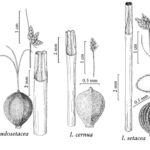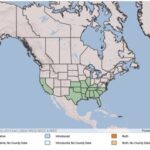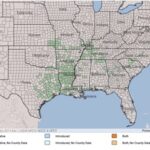Isolepis carinata (Scirpus koilolepis)
Illustration: eFloras.org. 2018. Flora of North America (www.efloras.org, 9 April 2018).
What is Keeled Bulrush?
Physical Characteristics
Leaves:
- 0.16-2 inches long
- Single bract, 0.67-1.3 inches long
- Bract looks like part of the stem
- Scales never purplish or reddish
Flowers:
Fruit:
- One seed
- Does not open to release seed when ripe
- 0.05-0.06 inches long
- 3 equally prominent angles
- Sides flat or slightly bulging
- Brown on surface
Stem:
- Hollow Stem
- Growing in dense clusters to form mats
- 1.5-8.7 inches long
- Dark grayish-green in color
- About 0.1 inches thick
- Slightly marked with parallel ridges
Roots:
- Fibrous
Where Does it Grow?
USDA, NRCS. The PLANTS Database (http://plants.usda.gov). National Plant Data Team, Greensboro, NC 27401-4901 USA.
Keeled Bulrush can be found in moist sandy loam, mud around lakes and ponds, marshes in coastal prairies and seepage areas.
Pros and Cons of Bulrush
Submerged portions of all aquatic plants provide habitats for many micro and macro invertebrates. These invertebrates in turn are used as food by fish and other wildlife species (e.g. amphibians, reptiles, ducks, etc.). After aquatic plants die, their decomposition by bacteria and fungi provides food (called “detritus”) for many aquatic invertebrates. Seeds of bulrushes are consumed by ducks and other birds; while geese, muskrats, and nutria consume the rhizomes and early shoots.


